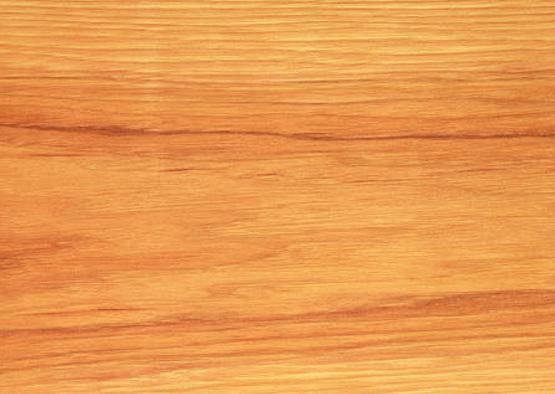American hickory is considered one of the most important of the commercially available eastern USA hardwoods for its combination of strength, toughness, hardness, and stiffness.
Red Hickory, White Hickory, Pecan, Pignut Hickory, Pignut, Sweet Pignut, Coast Pignut Hickory, Smoothbark Hickory, Swamp Hickory, Broom Hickory
Carya glabra

American hickory is a hardwood that is native to the eastern States of the USA. Its main commercial areas are the central and southern States. It is considered to be one of the most important trees of the eastern forests, due to its combination of strength, toughness, hardness and stiffness.
The hickories are split into two botanical groups - the true hickories and the pecan (fruit bearing) hickories. However, the wood of both groups is almost identical and is usually sold together. Sapwood is white with a brownish tinge; heartwood is a pale to reddish brown. The texture is coarse and usually with a straight grain, however it can be wavy or irregular. Bird pecks and mineral streaks are common characteristics of the timber and are not considered to be defects.
American hickory timber is quite difficult to work with hand tools or to machine and glue. It takes nails and screws well but care must be taken as it has a tendency to split. Pre-boring is recommended. The timber sands and polishes to an attractive finish.
American hickory is most commonly used in tool handles, drumsticks, furniture, flooring, cabinetry, ladders, dowels and sporting goods. It is increasingly exported from the US as flooring, given its rustic appearance and naturally occurring hardwearing properties.
Sawn American hickory timber is readily commercially available throughout the central and southern States of the US, but is yet to be imported into Australia in any significant quantities. Supplies are more limited if the timber is selected for its colour and sold as red or white hickory, or pecan.
In Australia, American hickory is largely available as drumsticks, for which purpose it is considered the premium timber, or through special order for custom furniture or DIY. The pecan hickory is grown in Australia for its fruit.
Shrinkage
| Very Low | Low | Medium | High | Very High | |
|---|---|---|---|---|---|

|

|
||||
Tangential : |
7.40%
|
||||
Radial : |
4.70%
|
||||
Unit Movement Tangential: |
0.41%
|
||||
Unit Movement Radial: |
0.26%
|
Strength Group

Very High |
High |
Reasonably High |
Medium High |
Medium |
Reasonably Low |
Low |
Very Low |
||
Unseasoned: |
S1 |
S2 |
S3 |
S4 |
S5 |
S6 |
S7 |
S8 |
|
|---|---|---|---|---|---|---|---|---|---|
Seasoned: |
SD1 |
SD2 |
SD3 |
SD4 |
SD5 |
SD6 |
SD7 |
SD8 |
|
Stress Grade

| Structural No. 1 |
Structural No. 2 |
Structural No. 3 |
Structural No. 4 |
Structural No. 5 |
|
Unseasoned: |
|
|
|
|
|
Seasoned: |
|
|
|
|
|
Density per Standard

Seasoned: |
805kg/m3
|
|---|---|
Unseasoned: |
1090kg/m3
|
Joint Group

Very High |
High |
Reasonably High |
Medium |
Low |
Very Low |
|
Unseasoned: |
J1 |
J2 |
J3 |
J4 |
J5 |
J6 |
|---|---|---|---|---|---|---|
 |
||||||
Seasoned: |
JD1 |
JD2 |
JD3 |
JD4 |
JD5 |
JD6 |
 |
Colour

| White, yellow, pale straw to light brown | Pink to pink brown | Light to dark red | Brown, chocolate, mottled or streaky | |
 |
||||
Mechanical Properties
Modulus of Rupture - Unseasoned: |
77
|
|---|---|
Modulus of Rupture - Seasoned: |
134
|
Modulus of Elasticity - Unseasoned: |
10.6
|
Modulus of Elasticity - Seasoned: |
15
|
Maximum Crushing Strength - Unseasoned:  |
31
|
Maximum Crushing Strength - Seasoned: |
61
|
Impact - Unseasoned: |
|
Impact - Seasoned: |
|
Toughness - Unseasoned: |
Low - up to 15 Nm
|
Toughness - Seasoned: |
Low - up to 15 Nm
|
Hardness - Unseasoned: |
6.8
|
Hardness - Seasoned: |
8.7
|
Durability
| Low | Moderate | Reasonably High | High | |
| (0 - 5 yrs) | (5 - 15 yrs) | (15 - 25 yrs) | (more than 25 yrs) | |
In-Ground: |
||||
| (0 - 7 yrs) | (7 - 15 yrs) | (15 - 40 yrs) | (More than 40 yrs) | |
Above ground: |
||||
| (0 - 20 yrs, usually < 5) | (21 - 40 yrs) | (41 - 64 yrs) | (More than 60 yrs) | |
Marine Borer Resistance: |
Lyctid Borer Susceptibility: |
Susceptible |
|---|---|
Lyctid Borer Susceptibility - Other: |
|
Termite Resistance: |
Fire Properties
Bushfire Resistance: |
Not tested
|
|---|
The American hickory has sapwood of white tinged with brown and heartwood of pale to reddish brown. Its grain is usually straight but can be wavy or irregular on occasion. The wood is coarse in texture with bird pecks and mineral streaks a common occurrence that is not considered to impact on the quality of the timber.
The most common applications for American hickory are tool handles, cabinetry, furniture, flooring, wooden ladders, drumsticks and sporting goods.
Working with American hickory requires some care, as it is difficult to machine and glue. While it takes nails and screws well, it has a tendency to split so pre-boring is recommended. It has good strength and shock resistance, and good steam-bending properties. It sands and polishes well. It has a high shrinkage value and can be difficult to dry; this can affect the timber’s stability in conditions with variable moisture.
